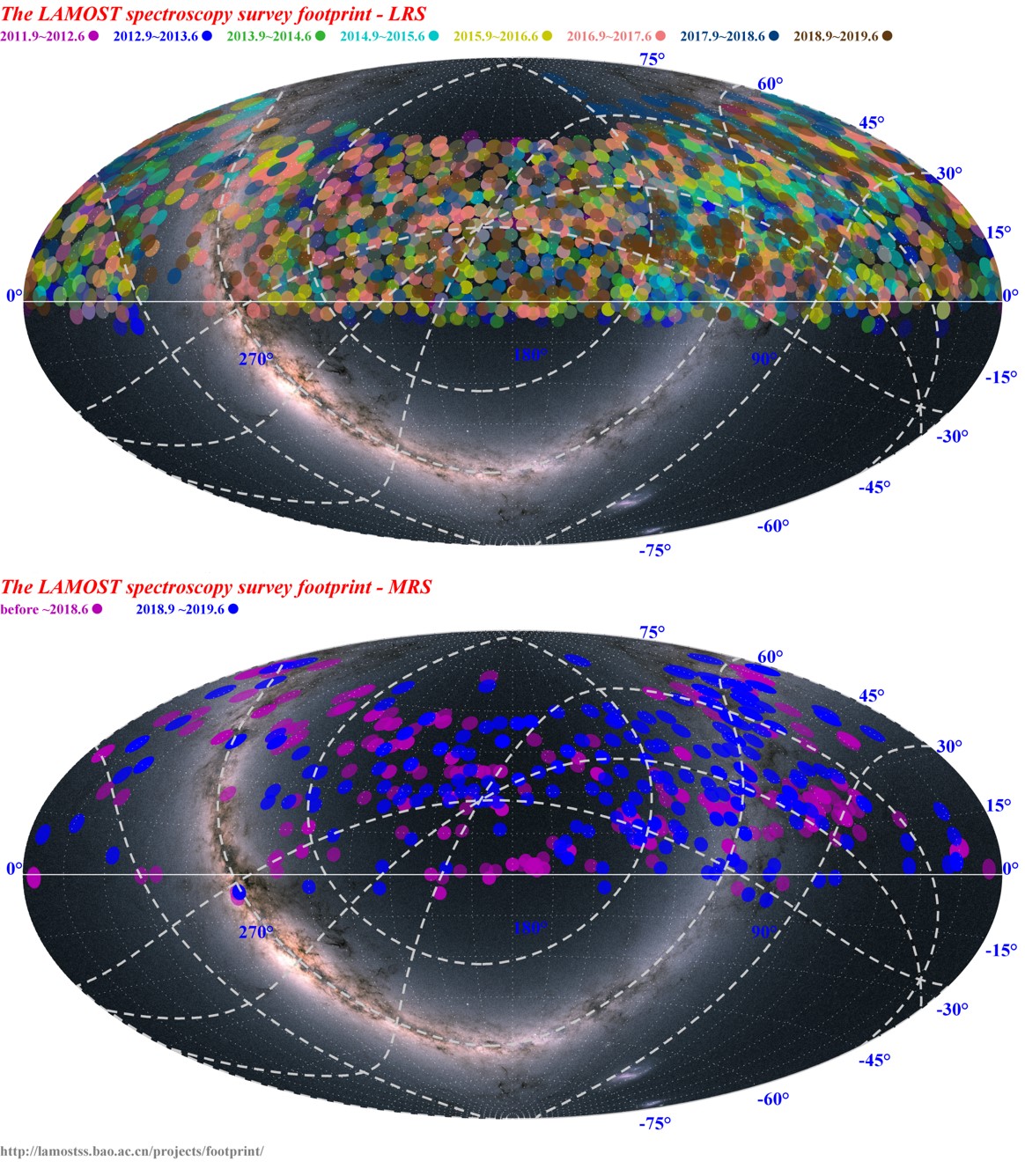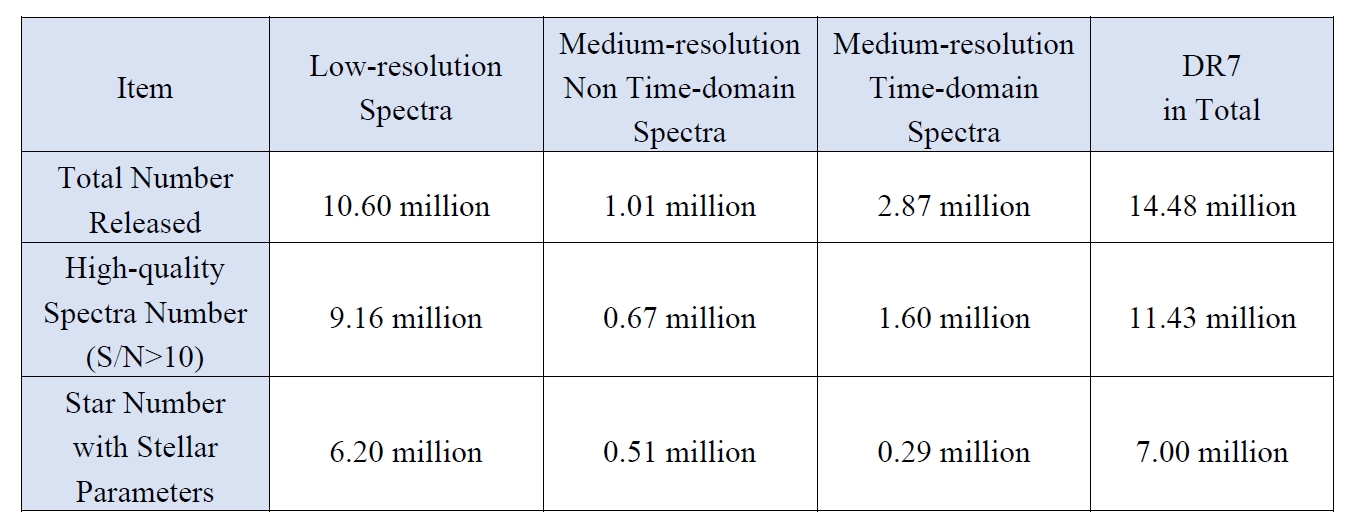You are here
LAMOST Released its Seventh Data (DR7) to the Public
With the joint efforts of the LAMOST Operation and Development Center and related institutes, in June 2019, LAMOST completed its seventh-year spectroscopic survey, which was also the first year that LAMOST performs the medium-resolution spectroscopic survey.
After nine months of data reduction and quality analysis, on March 31, 2020, the LAMOST DR7 dataset, including the spectra obtained from the pilot survey through the seventh-year regular survey, was officially released to domestic astronomers and international partners.
After one year of observational test, the strategy, observational targets and data reduction capability of LAMOST medium-resolution spectroscopic survey have all been proved to meet the survey requirements. On October 5, 2018, the second phase of LAMOST medium-resolution spectroscopic survey was officially launched, and it is expected to complete in June 2023. In the medium-resolution spectroscopic survey, LAMOST performs the medium- and low-resolution survey alternatively, that is, the low-resolution survey continues in dark nights, in grey nights the second-phase medium-resolution survey is performed, and bright nights are for the high-resolution observation. Therefore, the released DR7 dataset includes both the regular low-resolution spectral data and medium-resolution spectral data.
Obtained from the low-resolution observation of 4,926 plates and medium-resolution observation of 680 plates, a total of 14.48 million spectra are released in the DR7, including 10.6 million low-resolution spectra, 1.01 million medium-resolution non time-domain spectra and 2.87 million medium-resolution time-domain spectra. The number of high-quality (S/N > 10) spectra reach 11.43 million. Moreover, a stellar spectral parameter catalogue of 7 million stars is also released in DR7, in which the abundances of 12 elements, e.g., carbon, magnesium, calcium, and so on, are included for part of the stars for the first time. It has been currently the largest stellar spectral parameter catalogue in the world. Scientific users can log on the website at http://dr7.lamost.org to query and download the DR7 data..

Fig. Top: Footprint of the LAMOST pilot survey and the seven-year regular low-resolution survey. Bottom: Footprint of the LAMOST medium-resolution commissioning and the first-year regular medium-resolution survey. (Credit: LAMOST)
Information of DR7 dataset in detail:

Since the beginning of LAMOST survey, over 550 research papers using LAMOST data have been published internationally, and they have been cited over 5,000 times. In 2019, 136 research papers were published, 45 (33%) out of which were contributed independently by international researchers. Moreover, as a result of the first-year medium-resolution survey, five papers have been published as the earliest research results based on the medium-resolution spectral data.
At present, 937 users from 141 scientific research institutes and universities of China, the United States, Germany, Belgium, Denmark and other countries and regions are using LAMOST data to carry out research works. LAMOST has entered a new era of low- and medium-resolution observations. Based on LAMOST data, astronomers will continue to refresh our understanding of the universe
